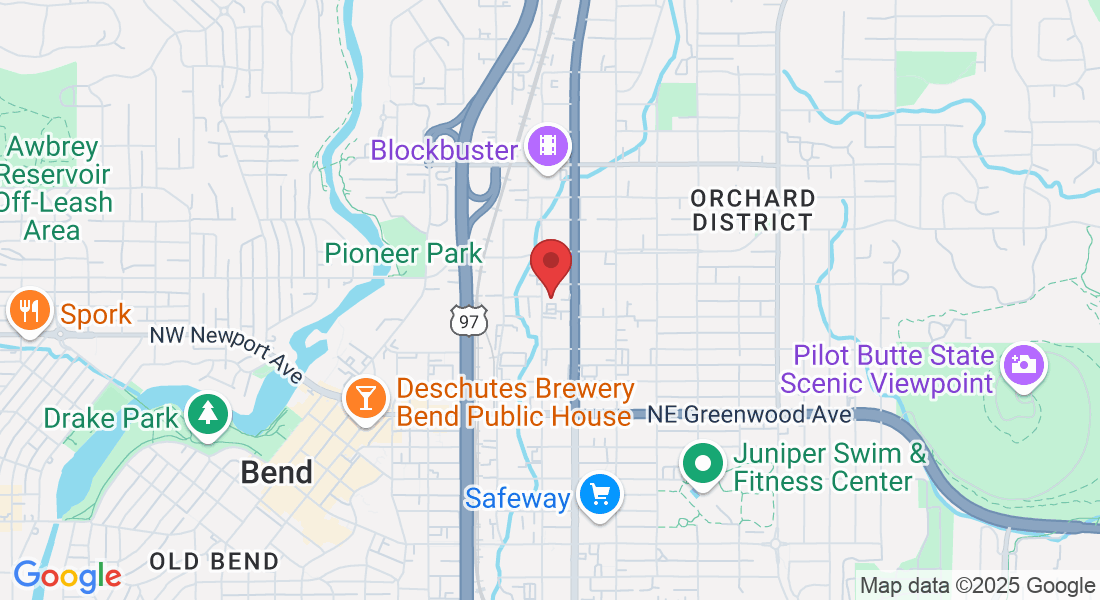Your Source for All Things Physical Therapy in Bend Oregon
The PhysioBLOG
Here, we share informative articles and insights that aim to help you achieve your full potential through our fitness-focused approach to rehabilitation. Our team is dedicated to providing you with valuable tips and techniques that can help you overcome any obstacle, whether you're recovering from an injury, surgery, or striving to build strength and wellness for life.
Stay up-to-date with our latest posts & empower yourself with elegantly simple techniques for optimal health & wellness.

PhysioFIT: Redefining Physical Therapy in Bend Oregon with a Fitness-Forward Approach
Please Note: The information provided on our website is intended for general education and is not a substitute for professional medical advice. Each individual's situation and body are different. Therefore, what may work for one person may not work for another. We care about your well-being and advise you to reach out to us to discuss your specific needs before implementing any advice from our website. If you’d like to explore this more or would like to schedule a time with a physical therapist in Bend Oregon, contact us at PhysioFITBend.com
Introduction
The Fitness-Forward Approach to Physical Therapy vs. Traditional Methods
Physical therapy has long been recognized as a crucial component of rehabilitation and recovery. It offers a non-invasive, drug-free approach to managing pain, improving mobility, and enhancing overall quality of life. However, like any other field of healthcare, physical therapy is not immune to evolution and innovation. One such innovation is the fitness-forward approach to physical therapy, a paradigm shift that is redefining rehabilitation and recovery.
In our beautiful city of Bend, Oregon, a city known for its vibrant outdoor culture and active lifestyle, this innovative approach is being championed by us at PhysioFIT, a leading physical therapy clinic. PhysioFIT's fitness-forward approach to physical therapy is not just about treating injuries or managing chronic conditions—it's about empowering individuals to take charge of their health and well-being, enhancing their physical fitness, and helping them achieve their personal goals.
In this article, we will delve into the traditional approach to physical therapy, explore the principles and benefits of the fitness-forward approach, and highlight how PhysioFIT is implementing this innovative approach to benefit the residents of Bend, Oregon.
Understanding Traditional Physical Therapy
Traditional physical therapy, often referred to as rehabilitative therapy, primarily focuses on helping patients recover from injuries or manage chronic conditions. The goal is to alleviate pain, improve mobility, and restore function to the affected area. This approach is often reactive, meaning it typically begins after an injury has occurred or a medical condition has been diagnosed.
Definition and Principles of Traditional Physical Therapy
Traditional physical therapy involves a range of techniques and therapies designed to alleviate pain, improve mobility, and restore function. These may include manual therapy (hands-on manipulation of body tissues), therapeutic exercises, electrotherapy, and more. The treatment plan is typically tailored to the individual's specific condition and needs, and progress is closely monitored by the physical therapist.
The principles of traditional physical therapy are rooted in the understanding of human anatomy and physiology, and the belief that targeted exercises and therapies can help the body heal and recover from injury or disease. The physical therapist plays a crucial role in this process, providing expert guidance, monitoring progress, and adjusting the treatment plan as necessary.
Common Methods Used in Traditional Physical Therapy
Traditional physical therapy employs a variety of methods to treat a wide range of conditions. These may include:
Manual Therapy: This involves hands-on techniques such as massage, mobilization, and manipulation to relieve pain, improve mobility, and stimulate healing.
Therapeutic Exercises: These are specific exercises designed to improve strength, flexibility, balance, and endurance, and to promote overall mobility and function.
Electrotherapy: This uses electrical stimulation to reduce pain, improve circulation, and promote healing.
Heat and Cold Therapy: These therapies are used to relieve pain, reduce inflammation, and promote healing.
Strengths and Limitations of Traditional Physical Therapy
Traditional physical therapy has proven effective in treating a wide range of conditions, from sports injuries and post-surgical recovery to chronic conditions like arthritis and neurological disorders. It offers a non-invasive, drug-free alternative to pain management, and plays a crucial role in helping individuals regain mobility and function.
However, traditional physical therapy also has its limitations. It is often reactive, typically beginning after an injury has occurred or a medical condition has been diagnosed. This means that opportunities for prevention and early intervention may be missed. Furthermore, traditional physical therapy often focuses on the affected area, rather than the whole person. This can result in a disjointed approach to health and wellness, where the underlying causes of the injury or condition may not be fully addressed.
The Fitness-Forward Approach to Physical Therapy
Definition and Principles of Fitness-Forward Physical Therapy
The fitness-forward approach to physical therapy is a progressive model that integrates elements of fitness training into the rehabilitation process. Unlike traditional physical therapy, which often focuses on treating specific injuries or conditions, the fitness-forward approach emphasizes overall physical fitness and wellness. This approach is grounded in the belief that improving general fitness can enhance the body's ability to heal, prevent injuries, and improve quality of life.
The fitness-forward approach is characterized by its emphasis on active participation and individualized exercise programs. Instead of relying solely on passive treatments like heat, ice, and electrical stimulation, fitness-forward physical therapists encourage patients to take an active role in their recovery. They design individualized exercise programs that not only address patients' specific injuries or conditions but also improve their strength, flexibility, balance, and cardiovascular fitness.
Common Methods Used in Fitness-Forward Physical Therapy
Fitness-forward physical therapy incorporates a variety of methods and techniques, many of which are borrowed from the fitness world. These can sometimes include:
Strength training exercises: These exercises are designed to build muscle strength and endurance, which can improve functional ability and reduce the risk of injury.
Cardiovascular exercises: These exercises help improve heart health and increase endurance, which can enhance overall fitness and well-being.
Flexibility exercises: These exercises help improve joint range of motion and muscle flexibility, which can prevent injuries and improve functional ability.
Balance and stability exercises: These exercises help improve balance and stability, which can prevent falls and other injuries.
Functional training exercises: These exercises mimic everyday activities or specific sports movements, helping patients improve their ability to perform these tasks in daily life.
Benefits and Advantages of Fitness-Forward Physical Therapy
The fitness-forward approach to physical therapy offers several benefits and advantages over traditional physical therapy:
Holistic treatment: By focusing on overall fitness, the fitness-forward approach provides a more holistic treatment that addresses the whole person, not just a specific injury or condition.
Prevention focus: The fitness-forward approach emphasizes injury prevention, helping patients stay healthy and avoid future injuries.
Improved long-term outcomes: By improving overall fitness, the fitness-forward approach can lead to better long-term outcomes, including improved functional ability and quality of life.
Increased patient engagement: The active nature of the fitness-forward approach can increase patient engagement and motivation, leading to better adherence to the treatment plan.
PhysioFIT's Fitness-Forward Approach
At PhysioFIT, we’re proud to offer a fitness-forward approach to physical therapy. Our team of skilled physical therapists are committed to helping our patients achieve their fitness and wellness goals, whether they're recovering from an injury, managing a chronic condition, or simply looking to improve their overall fitness.
PhysioFIT's Unique Methods and Strategies
At PhysioFIT, our fitness-forward approach is characterized by our unique methods and strategies:
Individualized exercise programs: We design individualized exercise programs that address our patients' specific needs and goals. These programs incorporate a variety of exercises, including strength training, cardiovascular exercises, flexibility exercises, balance and stability exercises, and functional training exercises.
Education and empowerment: We believe in educating our patients about their conditions and treatment plans, empowering them to take an active role in their recovery.
Long-term wellness focus: We focus on long-term wellness, helping our patients develop healthy habits and lifestyles that can improve their overall health and prevent future injuries.
Why PhysioFIT Prefers the Fitness-Forward Approach
At PhysioFIT, we prefer the fitness-forward approach because we believe it offers the best outcomes for our patients. This approach aligns with our philosophy of empowering our patients to take an active role in their recovery and promoting long-term wellness. We have seen firsthand how this approach can lead to better outcomes, including improved functional ability, reduced pain, and improved quality of life.
Comparing Fitness-Forward and Traditional Physical Therapy
While both fitness-forward and traditional physical therapy can be effective in treating injuries and conditions, there are some key differences between the two approaches.
Comparison of Methods and Techniques
Traditional physical therapy often focuses on passive treatments like heat, ice, and electrical stimulation, as well as manual therapy techniques like massage and joint mobilization. While these treatments can be effective in reducing pain and inflammation, they do not address the underlying causes of the injury or condition.
In contrast, the fitness-forward approach emphasizes active treatments like exercise and education. These treatments not only address the symptoms of the injury or condition but also improve overall fitness and prevent future injuries.
Pros and Cons of Each Approach
Both fitness-forward and traditional physical therapy have their pros and cons. The best approach for a particular patient depends on their specific needs and goals.
Traditional physical therapy can be effective in reducing pain and inflammation in the short term. However, it may not address the underlying causes of the injury or condition, and it may not provide long-term solutions for preventing future injuries.
The fitness-forward approach can provide more holistic treatment and better long-term outcomes. However, it requires a greater commitment from the patient, as it involves active participation and regular exercise.
Determining the Best Approach for Different Patients
The best approach for a particular patient depends on their specific needs and goals. For patients who are primarily interested in short-term pain relief, traditional physical therapy may be the best option. For patients who are interested in improving their overall fitness and preventing future injuries, the fitness-forward approach may be the best option.
At PhysioFIT, we work with each patient to determine the best approach for their specific needs and goals. We believe that the fitness-forward approach offers the best outcomes for most patients, but we are always willing to adapt our approach based on the needs of the individual patient. If you feel being seen by a physical therapist in Bend, Oregon is something you might need or want, then please don’t hesitate to contact us here at PhysioFIT and make an appointment.
Conclusion
Physical therapy is evolving, and the fitness-forward approach is leading the way. This approach, which integrates elements of fitness training into the rehabilitation process, offers a more holistic treatment that addresses the whole person, not just a specific injury or condition. At PhysioFIT in Bend, Oregon, we are proud to offer a fitness-forward approach to physical therapy. We believe that this approach offers the best outcomes for our patients, and we are committed to helping our patients achieve their fitness and wellness goals.
FAQ
What is traditional physical therapy?
Traditional physical therapy often focuses on treating specific injuries or conditions. It typically involves passive treatments like heat, ice, and electrical stimulation, as well as manual therapy techniques like massage and joint mobilization.
What is the difference between exercise therapy and physical therapy?
Exercise therapy is a component of physical therapy that involves the use of specific exercises to improve strength, flexibility, balance, and cardiovascular fitness. Physical therapy may also include other treatments like manual therapy, education, and modalities like heat and ice.
What are the different methods of physical therapy?
Physical therapy can involve a variety of methods, including manual therapy, exercise therapy, education, and modalities like heat and ice. The specific methods used depend on the needs of the individual patient.
What are the two types of physical therapy?
Physical therapy can be broadly divided into two types: traditional physical therapy and fitness-forward physical therapy. Traditional physical therapy often focuses on treating specific injuries or conditions, while fitness-forward physical therapy emphasizes overall physical fitness and wellness.
Please Note: It's important to note that any exercises or techniques that are shared should be performed under the guidance of a qualified bend physical therapy expert to ensure correct technique and to prevent injuries. A physical therapist can provide a customized exercise program based on the individual's fitness level, goals, and any existing injuries or conditions. If you’d like to explore this more or would like to schedule a time with a physical therapist in Bend Oregon, contact us atPhysioFITBend.com
Ask The Experts

PT, MSPT, OCS, CF-L1

PT, DPT, TPI, CF-L1

PT, DPT, CSCS
Copyright PhysioFIT 2025 . All Rights Reserved


